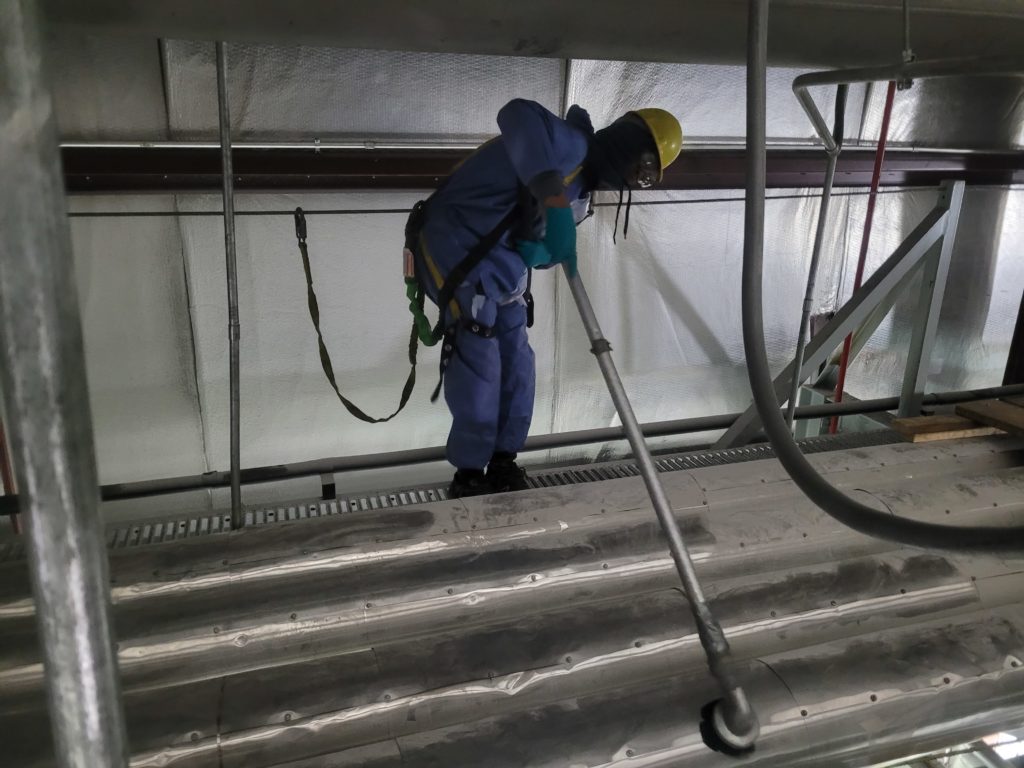What is Combustible Dust?
Leave a Comment
Combustible dust is a common threat in many industries and applications. It consists of small particles of material that can catch fire or explode when exposed to a heat source. Common combustible dust includes soot, coal, flour, sawdust, cotton fibers, fine metal powders, and more. While some combustible materials may not be incendiary under normal conditions, they become combustible when they achieve a specific particle size, consistency, and concentration.
Dust is a particularly insidious fire risk because it can build up out of sight on corners, air ducts, rafters, drop ceilings, and other flat surfaces. Even equipment that is used to remove dust, such as vacuums and dusters can collect dangerous levels of otherwise safe dust and create a fire hazard.
What is Combustible Dust?
According to the National Fire Protection Agency (NFPA) Standard 654, combustible dust is “a finely divided combustible particulate solid that represents a flash-fire hazard or explosion hazard when suspended in air or the process-specific oxidizing medium over a range of concentrations.” Dust poses an especially grave risk due to the speed with which it can ignite. With high concentrations, combustible dust can easily create damaging explosions and flash-fires that spread rapidly. Many materials have combustible potential as dust, regardless of the flammability of the material in its usual form.
Is Wood Dust Combustible?
Wood is a common material in numerous applications, from construction materials to furniture and agriculture. Wood dust is particularly combustible. Woodcutting, sawing, and sanding applications release fine particulates into the air, while sawdust, wood shavings, and even wooden beams can passively release dust to collect on hidden surfaces.
Is Aluminum Dust Combustible?
Aluminum is an excellent example of a non-combustible metal that becomes combustible in powder form. Aluminum dust, also known as aluminum fines, is often released during machining operations such as cutting, grinding, burring, sawing, sanding, and milling. Fine aluminum particles can collect in the air and create an explosion risk.
How to Determine if Dust is Combustible
The combustion potential of dust depends on the material, particle size, and concentration. Inspectors determine the combustion potential of specific dust using two measurements: the Kst value and Pmax value. The Kst value of combustible dust is the measurement of the potential severity of an explosion based on the moisture content, size, and elemental makeup of the dust particles. The Pmax value refers to the maximum potential force that an explosion of a particular dust will produce.
Common Combustible Dusts
Some of the most common combustible dusts include:
- Food Products: Grains, sugar, powdered milk, flour, cornstarch, and cocoa
- Pharmaceuticals: Vitamins, chemicals, talcum powder, and oral solids.
- Wood: Sawdust, wood dust, and wood flour
- Textiles: Cotton fly, cotton fibers, and nylon dust
- Plastics: Polypropylene, phenolic, and polyethylene
- Resins: Phenol-formaldehyde, epoxy, and plastic resins
- Biosolids: Human waste, animal waste, and fertilizer
- Metals: Aluminum, titanium, iron, and magnesium
- Carbon Dust and Coal
- Sulfur
Industries at Risk of Combustible Dust
These materials are incorporated into an extensive number of industries and applications. Industries that are at risk of combustible dust explosions include:
- Agriculture
- Chemical Manufacturing
- Fertilizer Production
- Food Manufacturing
- Furniture Manufacturing
- Metal Processing
- Pharmaceutical Manufacturing
- Rubber Manufacturing
- Tobacco Processing
Avoiding Combustible Dust Explosions
Combustible dust is particularly dangerous in industrial settings. Not only do industrial processes create a high level of dust, but they also use electrical equipment, flames, and other potential sources of combustion.
Fortunately, OSHA has established the following preventative measures to avoid combustible dust buildup:
- Install Dust Collection Systems: Use standardized dust-collection systems to capture dust before it can escape into the surrounding air.
- Use Specialized Containment: Store collected dust in specifically engineered containers designed to hold combustible dust.
- Clean Regularly: Establish a schedule for regular housekeeping to remove dust from equipment and horizontal surfaces such as floors, ducts, pipes, beams, ledges, and hoods to prevent dust accumulation.
- Purchase Downdraft Tables: Specially designed industrial downdraft tables help to minimize the release of dust into the workspace.
- Train Your Employees: Ensure that employees are aware of the dangers of combustible dust, and the importance of preventative measures such as daily cleaning and safe equipment handling.
- Monitor and Inspect: OSHA recommends establishing easy access to hidden areas where dust collection is likely, for both internal and OSHA inspections. Regularly inspect these areas to ensure that dust does not collect.
Dependable Combustible Cleaning Services From IMC
Since 1973, IMC has been a leading provider of commercial cleaning services for industrial facilities. We specialize in the removal of combustible materials consistent with stringent NFPA standards. IMC uses HEPA-filtered explosion proof vacuums and anti-static PPE to properly and safely remove combustible dust.
To learn more about our combustible dust cleaning services and other industrial cleaning solutions, contact us today or request a quote.

